

Solar panels’ dominance on rooftops across America is only getting stronger, but the technology behind them can seem complex and confusing. As a homeowner, you might even think, “Why would I get solar panels if I don’t even know how they work?”
To help you make a more informed decision, we put together this guide breaking down the science, benefits and practicalities of solar panels and how they work on your home.
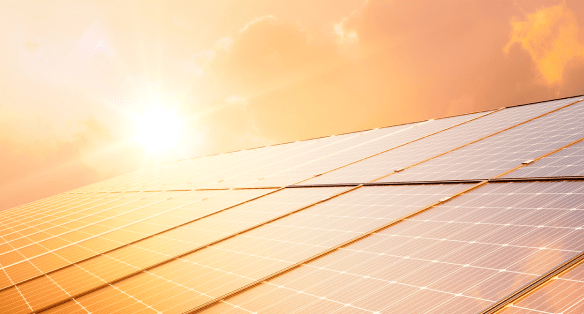
What’s Solar Energy?
Solar energy is heat and light from the sun. It’s a clean, renewable energy source that can be converted into electricity using various technologies, with solar electric panels being among the most prevalent. By reducing dependence on grid electricity, rooftop solar energy can stabilize, and even slash, the typical homeowner’s energy costs.
How Do Solar Panels Work?
At the heart of solar panels is something called the photovoltaic (PV) effect. At a high level, here’s how it works:
- Inside the panels are special materials called semiconductors. When the sun’s rays hit the solar panel, they transfer their energy to atoms in the semiconductor.
- This solar energy knocks electrons — tiny negative particles of energy — loose from the atoms, setting them in motion. As sunshine keeps striking the solar panel, more and more electrons get knocked free, creating a flow of electricity.
- To make this flow of electricity move in a particular direction, the semiconductor material is treated with special chemicals to create an electric field with a positive and negative side. The loose electrons naturally want to move to the positive side.
- Metal plates on the solar panels collect and channel the freed electrons moving through the semiconductor. The electrons then flow out of the solar panel as direct current (DC) electricity, which a solar inverter then converts to the alternating current (AC) electricity required to power the average home.
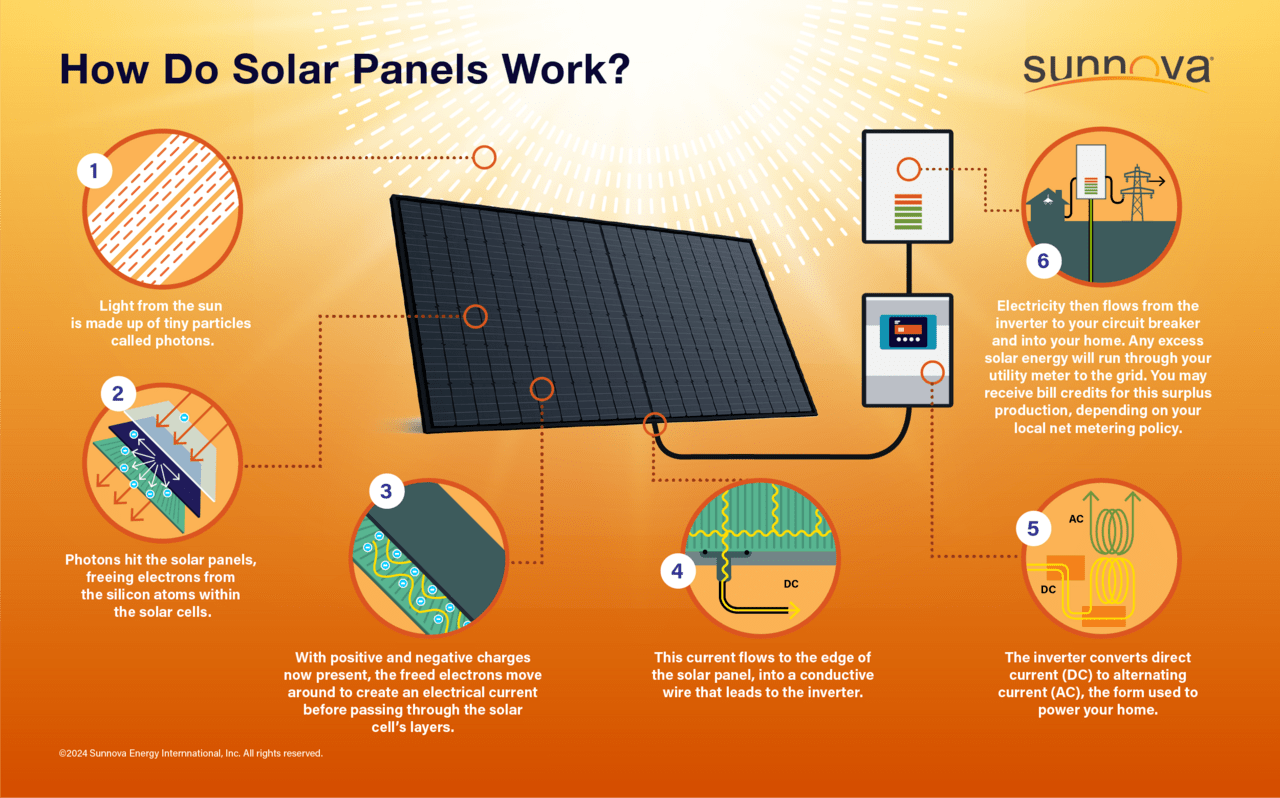
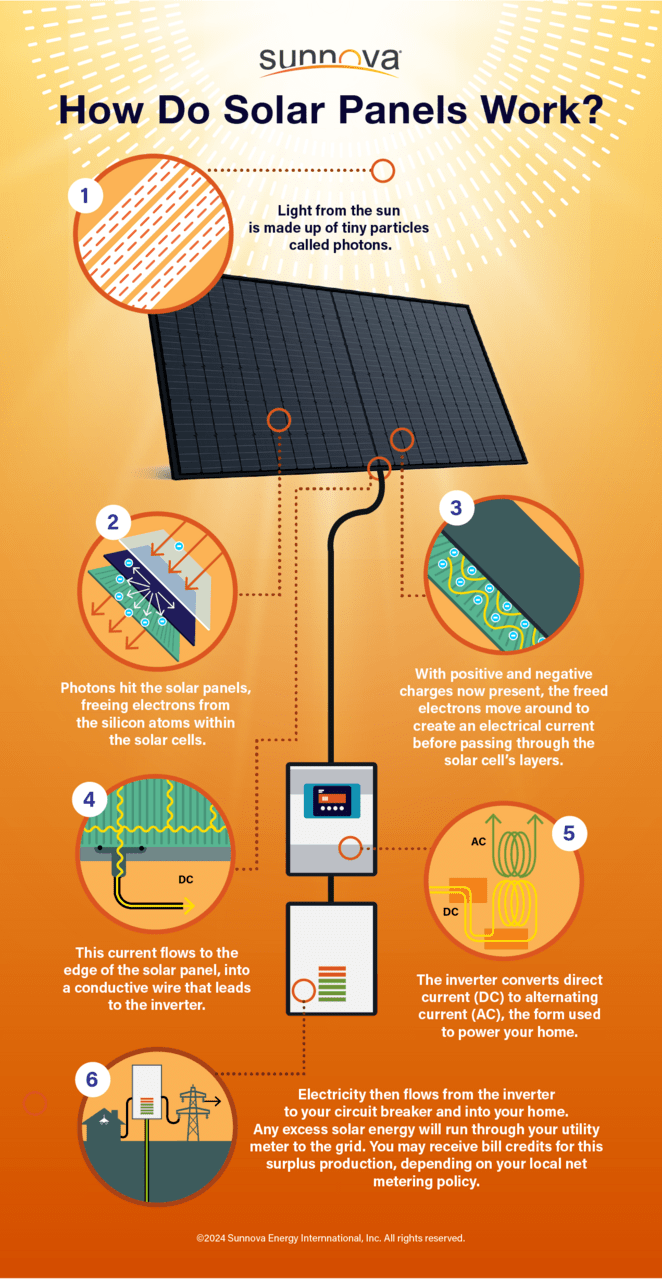
What Makes Up a Solar System?
A typical home solar system contains the following components:
- Solar Panels & Racking
- Utility & Solar Meters
- Solar Inverter
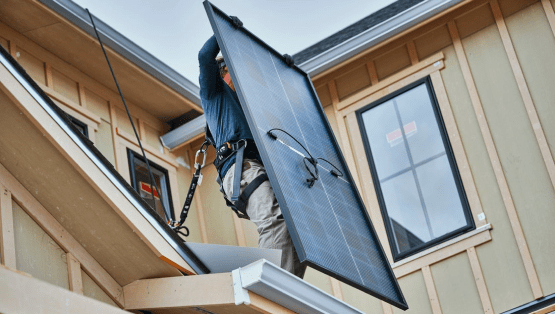
Solar Panels
Also known as photovoltaic (PV) panels or modules, solar panels are made of silicon cells covered in glass. We’re only talking about PV technology, not solar thermal systems that absorb sunlight to use in residential heating applications like hot water and swimming pools.
There are two types of PV panels — monocrystalline and polycrystalline. Monocrystalline is more efficient at converting sunlight into electricity, and it’s what we offer our customers at Sunnova.
Individual solar panels are called modules; these are lines of PV cells connected in a series to produce a higher voltage. When modules are wired together in a chain, they form a panel. A group of panels on your roof or ground-mounted in your yard is called an array.
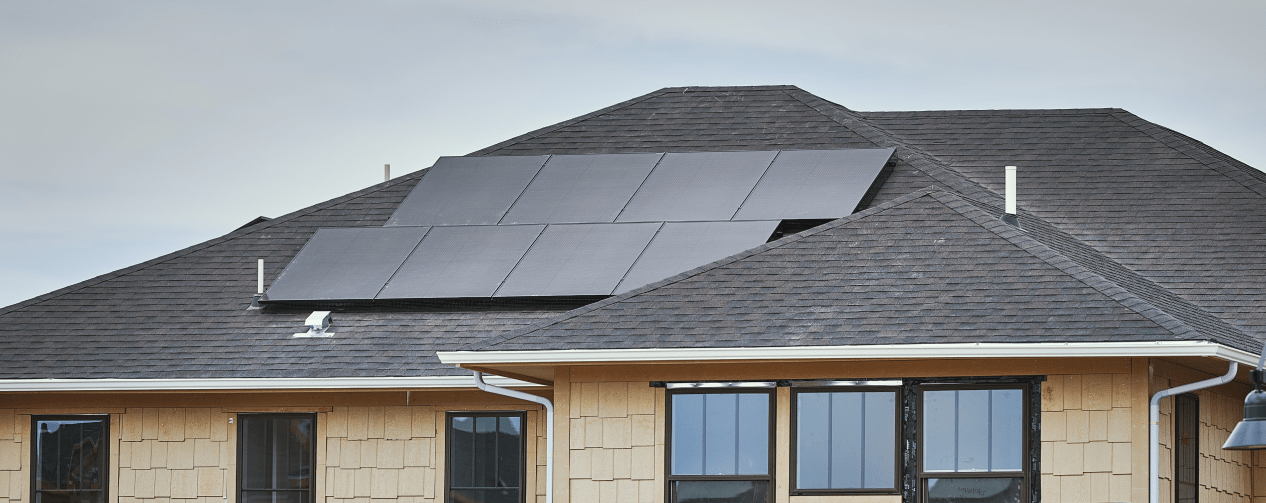
Solar Panel Racking
The solar panel mounting system (also known as racking) is what attaches the panels to your roof. While your racking configuration depends on the type of roof you have, some of the more common profiles include:
- Shingle Roof Mounting. Installing on these roofs generally requires flashing attachments that mechanically fasten the array beneath the shingles.
- Flat-Top Roof Mounting. This type of roof commonly utilizes a ballasted or hybrid mount system to secure the solar panels, and often doesn’t require penetration to install.
- Metal or Corrugated Roof Mounting. This roof type typically requires penetration to fasten the panels. Anchoring options include an “L-foot” bolt, or clamps that fasten to the metal ribs of the roof.
Some installers may even offer solar mounting options that attach directly to your roof, which are usually faster to install and more aesthetically pleasing.
Reputable installers will take great care in sealing the area around your racking equipment to prevent leaks and should also provide you with a warranty that covers leakage.
Aging roof? Sunnova offers roof replacements with home solar.
Utility & Solar Meters
You’re likely familiar with a traditional electric meter, which your utility uses to measure your energy usage for the month.
But when you go solar, your utility may need to either replace your traditional meter or add a second dual-direction meter that measures how much solar power you produce and send back to the grid.
This also helps the utility determine how much to credit you, if a net metering or similar program is offered in your region.
Solar Inverters
The solar inverter is what converts DC electricity from your panels into AC electricity that your home can use. There are three main types of solar inverters:
- String inverter. The oldest and typically most inexpensive option, this type of inverter is installed at ground level. All the solar panels are connected to a string inverter and to each other, meaning if a single panel fails, it will likely cause the other connected panels to underperform.
- Microinverter. Offering the latest technology and ideal for more complex solar installations, microinverters are installed behind each solar panel or integrated into the solar panel directly. This means each panel operates independently, and if one fails, it will only have a minimized impact on the overall system.
- String inverter with DC optimizer. These are a hybrid between microinverters and string inverters. Each panel is connected to a DC optimizer that runs to a string inverter at ground level, allowing each panel to operate independently.
What Goes into the Cost of Solar Panels?
When determining the cost of solar panels, this encompasses two broad categories — hardware costs and soft costs.
- Hardware costs. This includes all the materials needed to construct the system, such as the module, inverter, racking and wiring.
- Soft costs. This includes the cost of installation labor, permitting, inspection & interconnection fees, supply chain costs, overhead and sales tax.
While solar hardware costs have fallen in recent years, soft costs can make up as much as 65% of the total system cost — primarily due to costs associated with permitting and inspection at both the government and utility levels.

Want to learn more about solar panels and how they work for your home? Fill out the form below to talk with a local energy expert.

